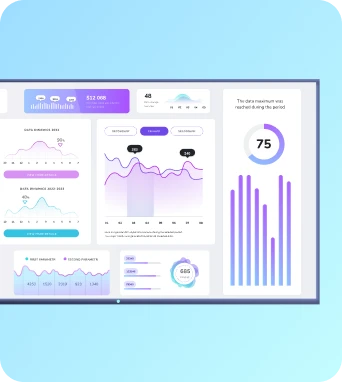Bandwidth-efficient streaming
Bandwidth-efficient streaming is an approach to delivering video and visual content that minimises network load while preserving perceived quality. It uses adaptive bitrate encoding, intelligent caching, local playback and smart delivery strategies to reduce bandwidth consumption on digital signage networks while keeping playback smooth and predictable.
Bandwidth-efficient streaming
Core techniques for reducing bandwidth use
The first line of defence is adaptive bitrate streaming and efficient codecs. Adaptive bitrate (ABR) strategies deliver different quality levels based on measured network conditions so each screen receives the highest possible quality that the link can sustain. Modern codecs such as H.265/HEVC and AV1 achieve better compression than older formats, allowing equivalent visual fidelity at lower bitrates; selecting the right codec and transcoding profiles for signage content can cut data use substantially. Equally important is choosing sensible production targets: limiting frame rates for simple motion graphics, resizing assets to the display resolution, and favouring vector or HTML content for layouts that do not require full‑motion video. Caching and prefetching reduce repeated downloads. Edge caching, CDN integration and local storage on the media player let frequently used assets be reused without new transfers. Prefetching scheduled content during off‑peak hours or when a player detects excess capacity smooths the bandwidth profile and prevents last‑minute spikes. For multi‑screen installations, multicast or peer‑assisted delivery techniques can replicate a single stream to many devices without multiplying bandwidth usage on the uplink, while local synchronisation ensures coordinated playback when needed. Subtopic 1 also covers resilient playback strategies. Store‑and‑play architectures let the player download content ahead of schedule and continue playing when the network is offline. Intelligent validation and checksum checks avoid redownloading unchanged files. Finally, monitoring and telemetry feed real‑time network measurements back to the management layer, enabling adaptive scheduling, remote troubleshooting and the fine‑tuning of bitrate ladders for each location’s typical conditions.
Applying bandwidth-efficient streaming in Fugo deployments
In practical Fugo deployments, bandwidth efficiency is achieved through a combination of platform features and operational practices. Fugo players support scheduled downloads and local playback, enabling content to be staged on devices during low‑usage windows. Administrators can set download windows, limit concurrent transfers, and prioritise critical assets so that crucial feeds arrive first. Fugo’s playlist and scheduling tools allow mixing lightweight content types—such as HTML widgets, text tickers and static images—with heavier video only when the network can accommodate them, reducing continuous streaming requirements. Network-aware configuration is essential. Fugo supports bandwidth caps and adaptive polling intervals so players on metred or mobile links can be constrained to a defined monthly allowance. The platform’s diagnostics provide bandwidth usage reports per player and per playlist, helping network managers identify high‑use items and replace or reprofile them. Where multiple players share a site, grouping and centralised staging reduce duplicate downloads, and integration with CDNs or regional caching points further lowers long‑haul traffic. Operational best practice includes producing assets sized to screen resolution, favouring progressive download for shorter clips and using ABR manifests for longer video where available. Test playlists under representative network conditions before rolling out changes, and use Fugo’s remote control to force cache refreshes only when necessary. These measures ensure that displays remain visually engaging without unexpected data consumption or playback failure, especially across geographically distributed signage networks.
Implementation Best Practices for Bandwidth-Efficient Streaming
Keep the learning going...
Bandwidth utilization tracking
Bandwidth utilization tracking records and analyses the volume, timing and patterns of network traffic used by digital signage devices and TV dashboards. It shows per-player consumption, content-related peaks and trends, enabling operators to detect playback bottlenecks, enforce quotas, and make data-driven decisions for capacity planning and content scheduling.
Bandwidth-adaptive media delivery
Bandwidth-adaptive media delivery is a method that dynamically adjusts video and image encoding, resolution and bitrate in response to real-time network conditions. Designed for digital signage and TV dashboards, it preserves playback continuity and brand visuals while minimising stalls, data waste and the need for manual quality overrides across distributed display networks.
Beacon-triggered ads
Beacon-triggered ads are location-aware digital signage messages activated by nearby Bluetooth Low Energy (BLE) beacons. They deliver timely, contextual promotions or information to TV dashboards and displays, enabling zone-based targeting and moment-specific content changes for retail, hospitality, workplace and event environments managed via Fugo.ai.



